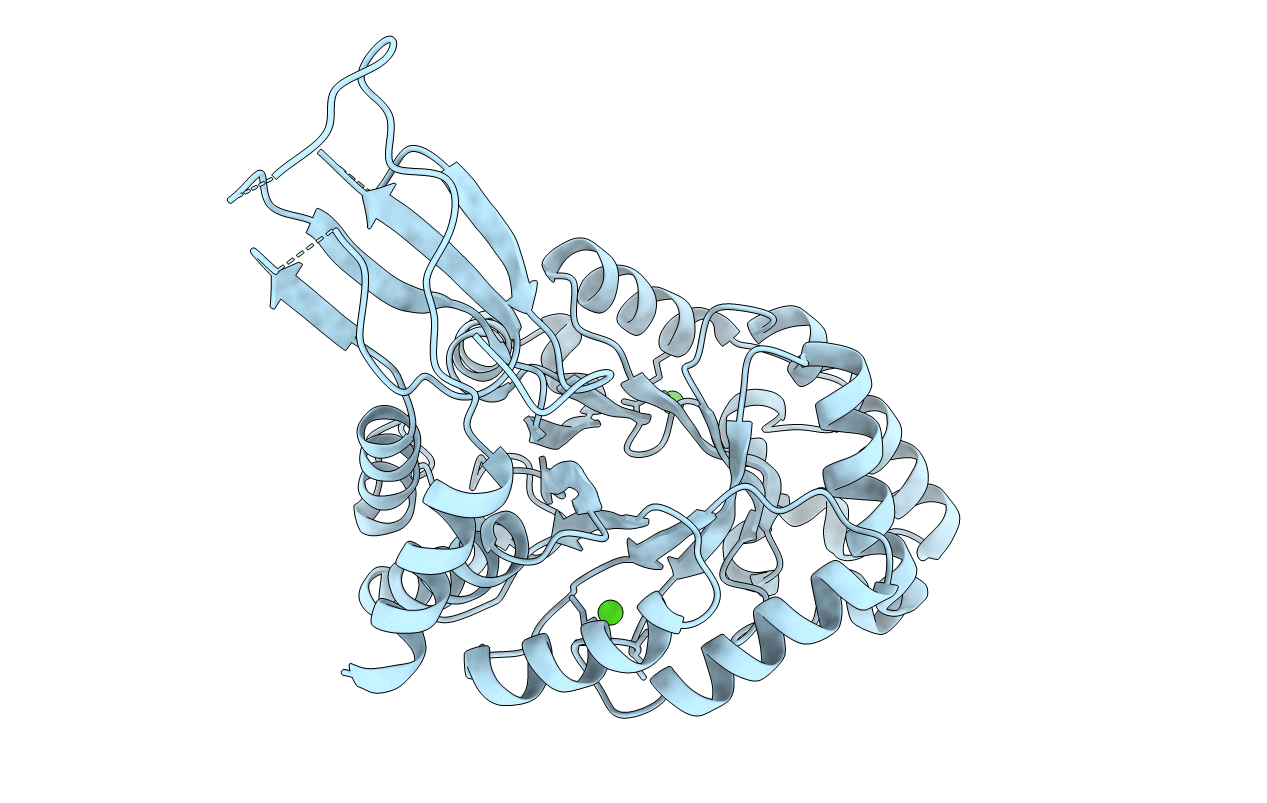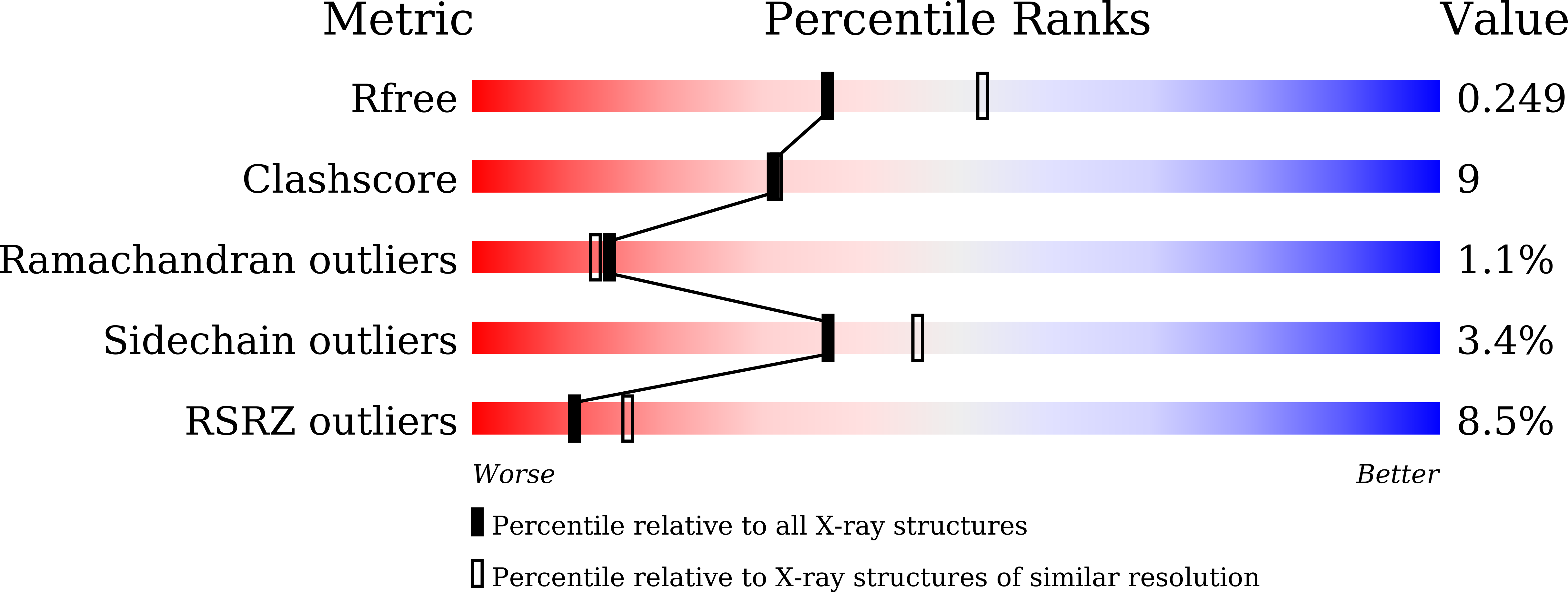
Deposition Date
2020-10-07
Release Date
2021-08-18
Last Version Date
2023-11-29
Entry Detail
PDB ID:
7D88
Keywords:
Title:
Crystal structure of a novel thermostable GH10 xylanase XynA
Biological Source:
Source Organism:
Bacillus sp. (Taxon ID: 1409)
Host Organism:
Method Details:
Experimental Method:
Resolution:
2.34 Å
R-Value Free:
0.24
R-Value Work:
0.21
R-Value Observed:
0.21
Space Group:
P 41 2 2


